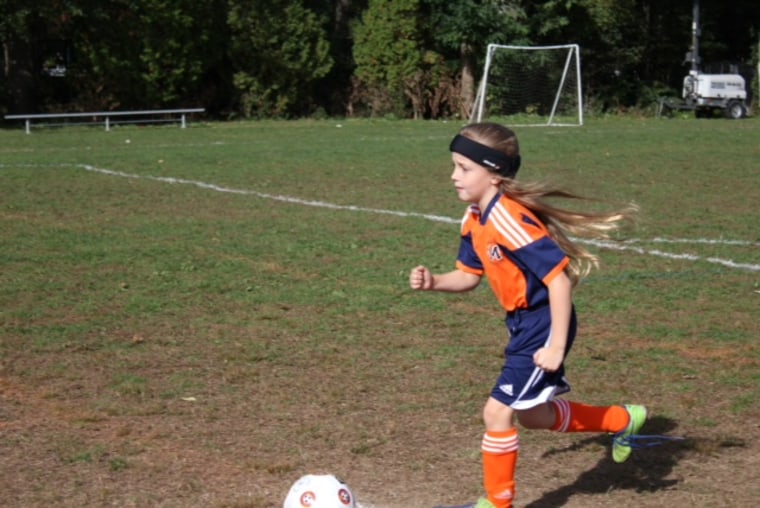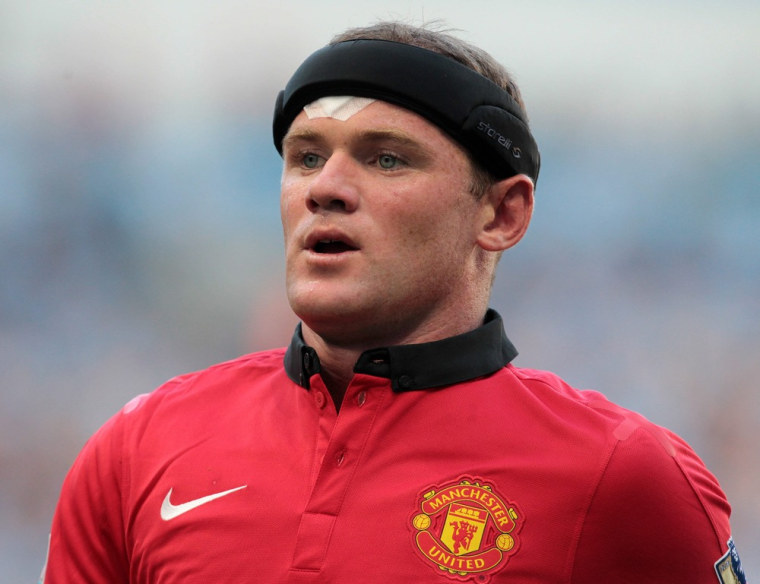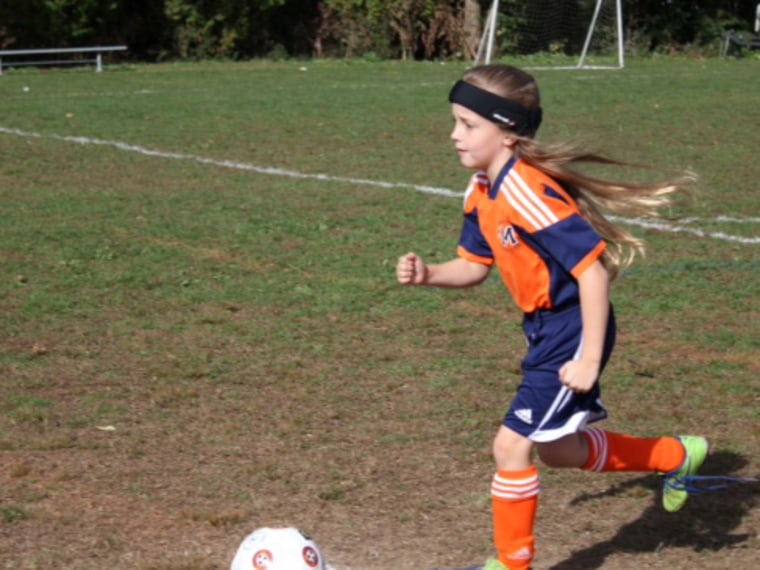
Most parents wouldn’t dream of sending a child on to the football field minus a helmet. But many of us are quite comfortable when our kid plays soccer or field hockey without protective headgear — despite some of the grisly collisions we may have seen from the sidelines.
This fall, though, Princeton, N.J., schools have taken a bold step and required students, for both practice and competition, grades six through 12, to wear a soft helmet during boys and girls soccer, as well as girls field hockey and lacrosse. According to Timothy Quinn, president of the Princeton school board, the headgear retails for about $70 but is provided to students at no charge by the school district .
For the first year, it’s mandatory for all sixth-grade players, while parents in higher grades can formally opt-out of the rule for their child.
And so far, the vast majority of Princeton parents, grades seven through 12, are opting out. “Right now, very few are doing it,” said John Miranda, Princeton’s athletic director. “Change is hard. Many of these parents have spent a lifetime playing without anything and I’m not surprised there’s initial resistance.”
Princeton’s decision raises questions about what kinds of injuries soft helmets protect against and whether experts believe children should be wearing them for sports like soccer. On the one hand, the American Medical Society for Sports Medicine’s “position statement on concussion in sport” says that soft helmets are best suited to prevent impact injuries, such as fractures, bleeding and lacerations, but have not been shown to reduce the incidence or severity of concussions.
Yet there are those who believe the soft helmets do more harm than good. Dr. William W. Briner Jr., a primary care sports specialist at the Hospital For Special Surgery in Uniondale, N.Y., and a former physician for the U.S. National Soccer Team, characterizes Princeton’s efforts as well-intentioned, but ultimately misdirected.
“I think there is a greater risk from the feeling of invulnerability that a helmet might confer than there is a chance that a helmet would protect the brain,” Briner says.
Tobey Bryant, a Bellevue, Wash., mother of three, says she’s witnessed “the false sense of security” firsthand, when her 14-year old daughter, Ellie, temporarily wore a soft helmet for soccer. No stranger to serious injuries — Ellie once collided with another girl, who ended up with a cracked scull— Bryant doesn’t make her child use protective headgear, because she noticed her daughter becoming “more aggressive” in the games where she does wear it.
“When she wasn’t wearing (a soft helmet), she’s more careful about what she goes after,” Bryant said. “Without a helmet she will sometimes say to herself, ‘I’m not going to take that on the head. I’m going to let that bounce first.’”
Dr. Michael L Lipton, professor of Neuroradiology at Albert Einstein College of Medicine, says the increased aggression argument may resonate with parents, but there’s no data to conclude whether this really occurs. In fact, Lipton’s research, published in the journal Radiology, found that adult soccer players who frequently head the ball may be risking brain injury, memory loss and impaired cognitive ability, whether or not they have a history of concussion.

“Personally, I would not opt out of Princeton’s rule for my child,” says Lipton. “Not based on the illusion that it will prevent concussive injury, but because I’d rather error on the side of caution until there is more evidence.”
For soccer mom Laurie Gibbs of Aldie, Va., whose 16-year-old daughter missed three weeks of school last year after a head-to-head collision on the field, concussions are something she wouldn’t wish on any parent’s child. “The recovery is long and frustrating for the whole family,” says Gibbs, who applauds Princeton’s effort.
The problem, Gibbs explains, is that young soccer players don’t see professional players wearing headgear, so there’s a stigma attached to those who wear them, that they’re somehow weaker opponents.
But that could all change soon. Last month, soccer star Wayne Rooney returned to the pitch after a head injury sporting quite the accent to his Manchester United jersey: A sleek, black headgear made by the Brooklyn, N.Y.-based Storelli Sports. The company had sent him a sample of their $60 “ExoShield” on a whim, which Rooney wore again this past weekend. Made of “state of the art foam” used in “military helmets,” the company’s headband comes in a variety of sizes, and can be worn by players who start playing soccer in kindergarten.
“The game has just become more physical,” says Claudio Storelli, the company's 31-year old chief executive officer and an avid soccer player. “We had to come up with something that really protects a player’s head but also looks and feels cool when you’re wearing it, not to mention something that a single mom can hopefully afford for her child.”
Jacoba Urist is a business, health and lifestyle reporter in NYC.
